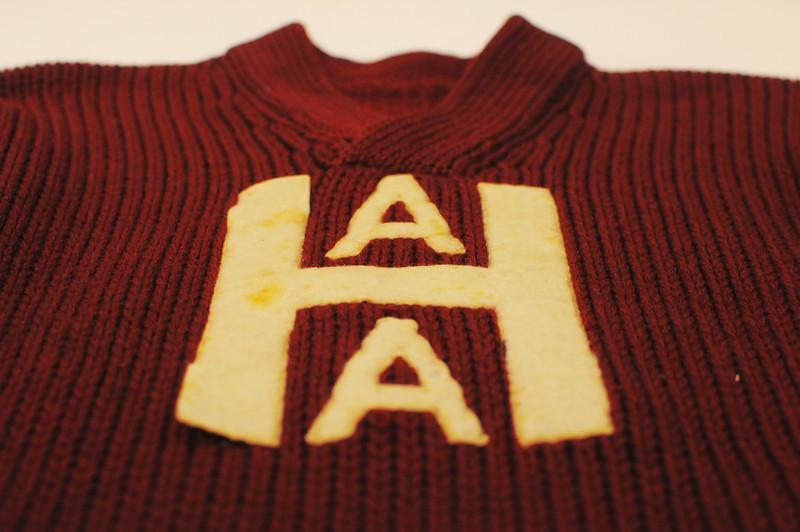The 1912 season was a revolutionary one for college football. A century ago, the NCAA implemented a number of rule changes to the then-77-school league that would change the game forever, ushering in the modern era of America’s most popular sport.
For the first time, teams were given four downs instead of three; the value of touchdowns was increased from five points to six; and the field was reduced from 110 to 100 yards, with two end zones of ten yards added instead. Among smaller changes, kickoffs were made from the 40-yard line rather than midfield, the ball was placed at the 20 rather than the 25 following touchbacks, teams were given much more leeway to use the forward pass, and the onside kick was abolished.
The new rules were implemented on Feb. 3, 1912 by a football rules committee composed of Harvard head coach Percy D. Haughton, Class of 1899, Yale’s Walter Camp, and Penn’s W.N. Morice. According to The Crimson, the changes were intended to “more nearly equalize the attacking and defensive powers.”
“During the past season it developed that if a team could not gain its ten yards in two downs it preferred to trust to the individual ability of a punter, rather than to risk losing the ball entirely,” the newspaper explained. “The change which gives a team four downs to make ten yards is expected to strengthen the offense.” The reasoning provided for the ban on onside kicks was their “generally unsatisfactory nature, and the possibility of injuries resulting from the efforts to recover the bounding ball.”
Ten months later, the first season under the new rules came to an end with Haughton’s Crimson at the top of the college football world. Harvard dominated its schedule and finished the year 9-0—its first of three straight unbeaten seasons—and earned its sixth national championship.
The story of how the team got to that point involves more than the coach who had been a two-time first-team All-American at defensive tackle for the Crimson from 1896 to 1899. It also encompasses a defensive end who would later shun Connie Mack, a fullback who found the game “not quite rough enough,” two interior linemen who would later become a chemist and a war hero, and one of the best drop-kickers in history.
TRAINING DAY
A few months after the new rules had been put in place, Haughton began preparations for Harvard’s season opener against Maine, which would take place at the nine-year-old Harvard Stadium on Sept. 28. Coming off a 6-2-1 season in 1911, the Crimson practiced for just two weeks upon arriving at school. During those practices, according to The Crimson, “shifting teams of men on the first squad were put against one another for practice in running through signals and formations against a defence [sic].”
Defensive end Samuel Felton and fullback Huntington “Tack” Hardwick battled against each other for the punter job, averaging 40 yards per punt in practice with a few 50-yard kicks as well. A year prior, Felton had been one of the leaders of a Crimson squad that had opened the season 5-0, outscoring opponents 72-6 over that stretch. But the then-junior was seriously injured in that fifth game against Brown after being kicked in the side and developing a blood clot. Following the injury, the team was never the same and went 1-2-1 down the stretch. But with a new season on the horizon, The Crimson noted Felton’s recovery, stating that his “work in all departments of the game is excellent and it is fortunate that he will be able to play the entire season.”
The 174-pound Hardwick was known for his blocking skills. One reporter would later describe him as “perhaps the hardest blocker American football has ever known. A vicious, tireless interferer, Hardwick was never happy as long as a single enemy remained standing.” Sportswriter Grantland Rice would later deem the sophomore “the spirit of football,” describing him as “a big, fine-looking aristocrat from blue-blood stock,” who “loved combat—body contact at crushing force.”
Robert Storer lined up alongside Felton at defensive tackle. An upperclassman who had also played center the year before, Storer was well known for his special teams prowess, notably his ability to “[get] down the field under punts with the ends and [make] a sure tackle of the runner,” according to The Crimson.
As the team continued to prepare for the Black Bears, Haughton emphasized both field goal kicking and the newly important forward pass. 5’8” quarterback H.B. Gardener quickly began generating chemistry by throwing 20-yard passes to teammates J.A. Milholland and Albert Weatherhead.
Behind Gardener was halfback Charles Brickley, also a talented drop-kicker who had captained the freshman squad a year prior. Before arriving at school, Brickley had finished ninth in the triple jump at the 1912 Summer Olympics in Stockholm. Frederick Bradlee also played halfback while Hardwick served as the fullback. “All of these men are heavy and fast, and are developing into sure ground gainers,” The Crimson wrote.
Members of the offensive line included Gerard Driscoll, a newcomer to the team who had been “showing up very well” during practices, the 185-pound Derrick Parmenter—described as “fast in charging”—at center, sophomore Stanley Pennock at right guard, and Weatherford, another sophomore, at right tackle. Pennock had played on the freshman team the year prior, and to that point, according to The Crimson, he had “yet to prove his value on the first eleven, though his work in practice has been good.”
THE GAMES BEGIN
Read more in Sports
Harvard Football Picked To Finish First




















